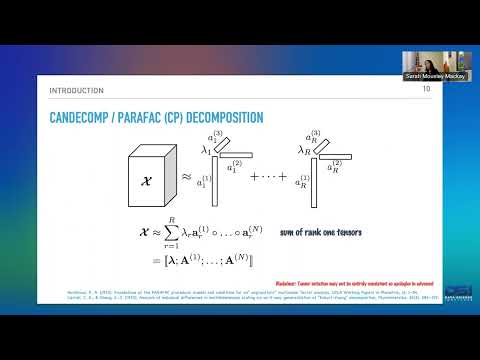Description:
Save Big on Coursera Plus. 7,000+ courses at $160 off. Limited Time Only!
Grab it
Explore tensor factorization techniques for biomedical representation learning in this seminar by Joyce Ho from Emory University. Discover how tensors can capture patient representations from electronic health records, addressing challenges of missing and time-varying measurements while outperforming deep learning models in predictive power. Learn about the application of tensor factorization in learning node embeddings for dynamic and heterogeneous graphs, and its use in automating systematic reviews. Gain insights into novel machine learning algorithms addressing healthcare problems, including patient subgroup identification, data integration, and handling conflicting expert annotations. Delve into topics such as matrix factorization, CPT decomposition, computational phenotypes, bibliographic networks, graph neural networks, and Tucker decomposition. Understand the challenges and theorems related to tensor factorization, and explore its potential in various biomedical applications.

Tensor Factorization for Biomedical Representation Learning
Add to list
#Computer Science
#Machine Learning
#Representation Learning
#Data Science
#Information Technology
#Electronic Health Records